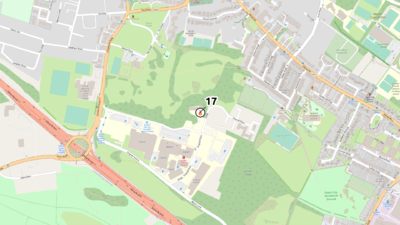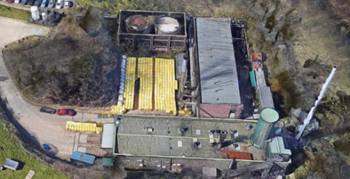Sidcup Waste to Energy Facility
Clinical Waste Incinerator operated by Stericycle (SRCL) and located adjacent to Queen Mary's Hospital, Sidcup, Kent.
| Sidcup Waste to Energy Facility | |
 See HT & Clin → page for a larger UK Wide map. | |
| Waste Licence | JP3133XP |
| Operator | SRCL |
| Operational Capacity | 8,500tpa |
| Number of Lines | 1 |
| Region | London |
Annual Report Data
| Year | Total In | Total Clinical | IBA Out | ACP Out | Op Hours
|
|---|---|---|---|---|---|
| 2019 | 7984 | 7933 | 1448 | 306 | 7984 |
| 2018 | |||||
| 2017 | |||||
| 2020 | 6305 | 6305 | 1250 | 261 | 7292 |
| 2021 | 6720 | 6720 | 1194 | 334 | 7424 |
| 2022 | 5250 | 5175 | 694 | 255 | 6161 |

Summary
Clinical Waste Incinerator operated by Stericycle (SRCL) and located adjacent to Queen Mary's Hospital, Sidcup, Kent. The facility is designed to process 1000 kilograms per hour, and is of pulse hearth design[1].
The Sidcup Waste to Energy Facility incinerates clinical waste, including clinical wastes classed as hazardous under the Hazardous Waste (England and Wales) Regulations 2005. The bulk of the waste is produced at hospitals, but also includes smaller quantities from doctors’ surgeries, dentists, health clinics, residential and nursing homes, and from medical research facilities.[1]. The hazardous wastes incinerated include infectious waste and waste containing cytotoxic or cytostatic medicines[1].
The plant also incinerates small amounts of specialised wastes.
Plant[1]
Healthcare wastes are loaded mechanically direct from the wheeled bins used to deliver the waste, into the hopper which provides the opportunity to visually inspect the waste before it is tipped into the incinerator charging hopper. Once inspection is complete, the waste is charged into the incinerator where the combustion process commences. The waste is burnt at a minimum temperature of 850°C,where it burns out to produce an ash. The residues are then dropped into an ash quench pit at the end of the process before being transferred into a skip.
The flue gases from the Incineration process then pass through a secondary chamber, or afterburner, where any gaseous products of Combustion are burned out under oxygen rich conditions. This stage is designed to destroy any Carbon Monoxide, Volatile Organic Compounds, and dioxins and furans produced by the Combustion process.
The flue gases are then cooled by passing through a waste-heat boiler and economiser, before passing into the final, abatement section of the process. Powdered lime (Calcium Hydroxide) and powdered activated carbon are added to the flue gases entering the abatement process to remove acid gases, heavy metals and residual dioxins and furans before discharge to atmosphere from the stack. The flue gases being discharged from the stack are continuously monitored for Hydrogen Chloride, Sulphur Dioxide, Carbon Monoxide, Oxides of Nitrogen, particulate matter (dust), Volatile Organic Compounds, oxygen, Ammonia and nitrous oxide.
The incineration process produces two residues; bottom ash and spent lime.
Waste Tonnage, By Origin
The table shows a list of the Waste for the Permit JP3133XP, that has arrived into sites as reported to the Regulator and then publicised in their reported statistics. The Data used is from the most recent returns. The total reported tonnage arriving at the site was: Expression error: Unexpected < operator.t.
Where this tonnage exceeds that reported in year of the corresponding annual report, this may be due to the following reasons:
- Tonnage may have been received but not incinerated, i.e. the material is held pending incineration (the operator return to the EA reports as received whereas the annual report focuses on when the waste is incinerated.)
- Material may have been received into the site but treated in some other way than incineration.
- Material may have been received on the but transferred out of site for disposal/treatment at another site rather than incineration on the site.
| EWC Code | Origin of Waste | Tonnes In |
|---|
